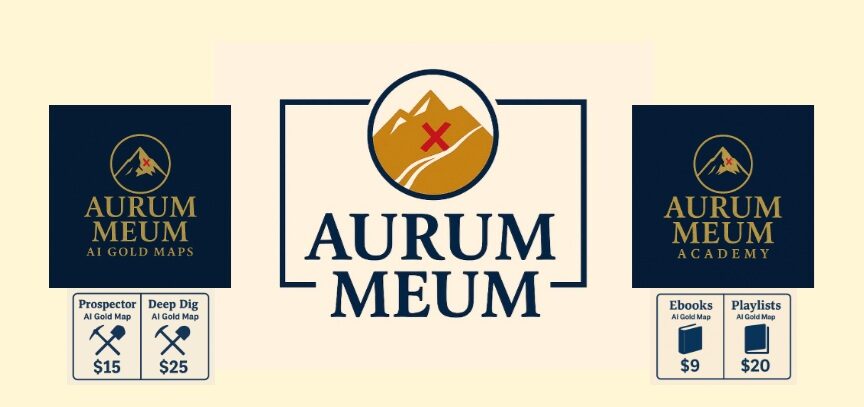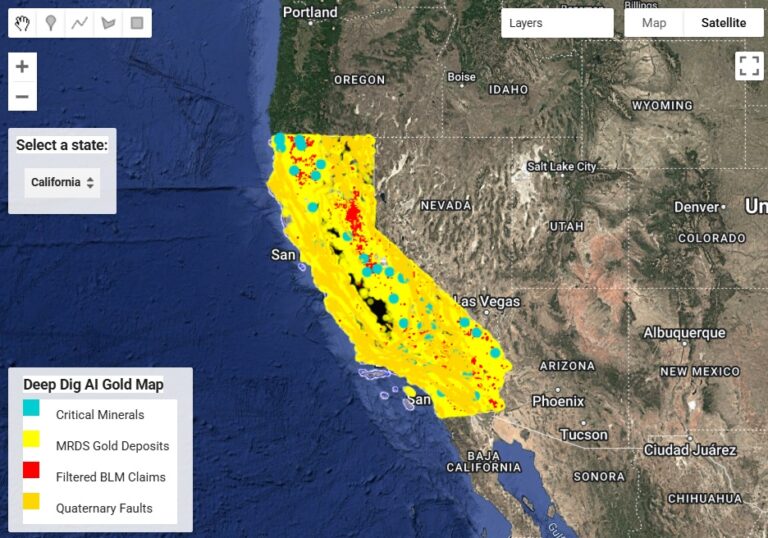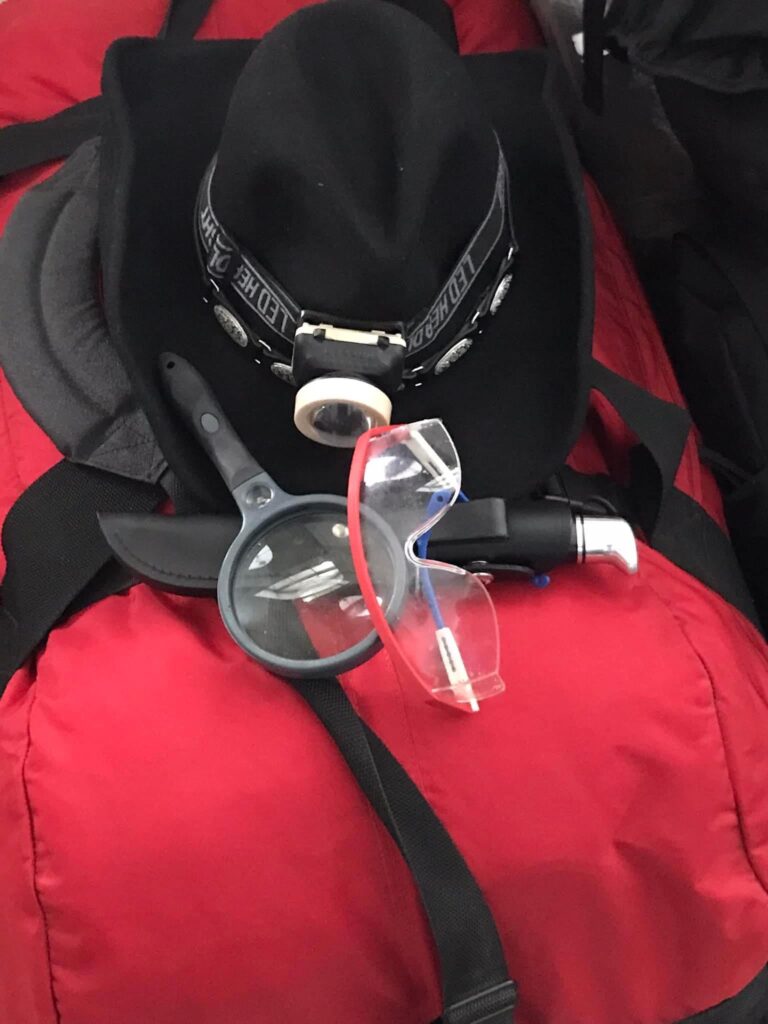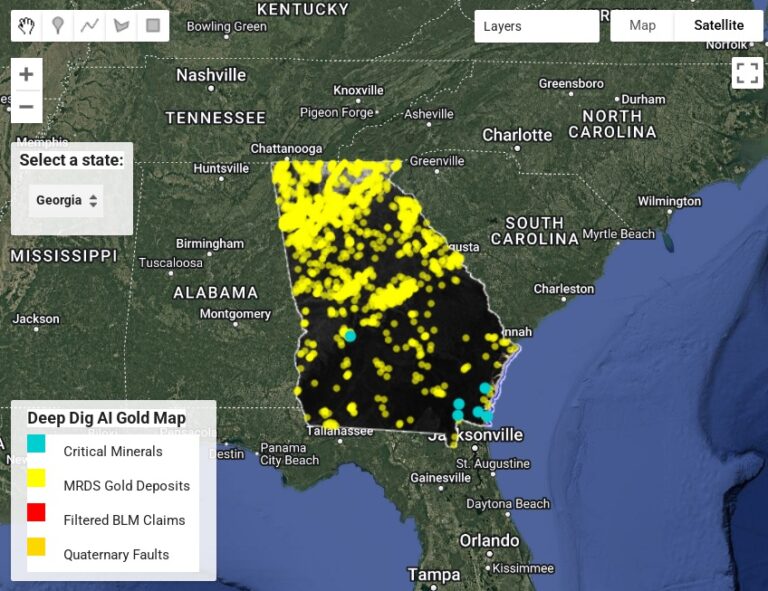Appalachian Orogenic Gold Zone
The Appalachian Orogenic Zone holds one of America’s richest gold histories. This ancient orogenic belt stretches from Alabama to Maine.
Appalachian Orogenic Gold Zone:
How the Gold Formed
Orogenic gold forms deep underground when tectonic plates collide. These forces push gold-rich fluids into cracks. As the fluids cool, gold hardens into quartz veins.
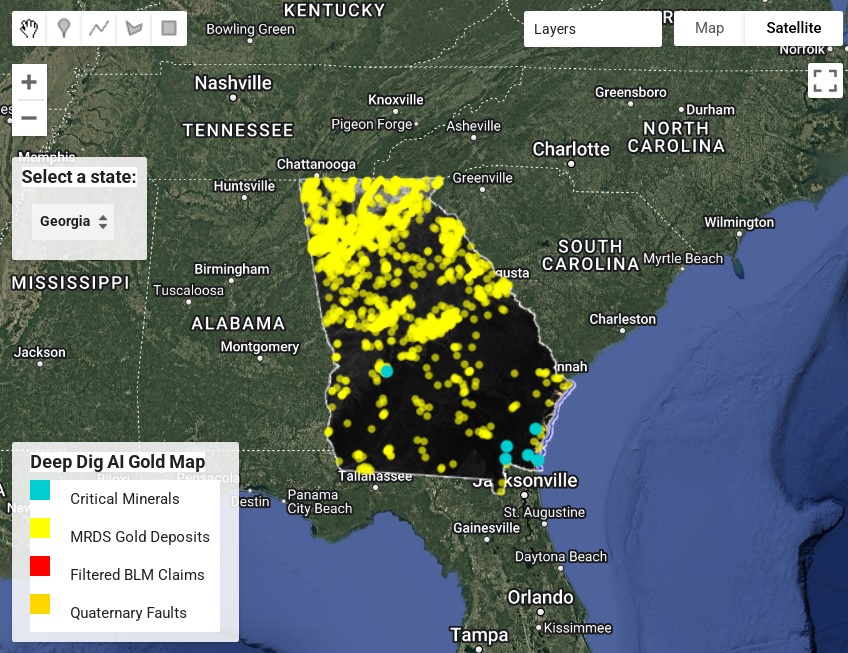
WE HAVE 2 AI MAPS PER STATE! WE HAVE ALL FIFTY STATES AND GLOBAL MAPS TOO! USE A SHOPPING CART TO PURCHASE LISTED STATES DIRECTLY. FOR UNLISTED MAPS, USE AURI CHAT, FROM OUR ARTIFICIAL INTELLIGENCE TEAM. SHE’ll GET YOU IN TOUCH WITH ME! COME BACK EVERY WEEK! WATCH OUR LIST GROW!
Where to Prospect Today
Top gold-producing states include Georgia, North Carolina, South Carolina, and Virginia. Look for quartz veins, iron stains, and active streams near historic sites.
Tools and Techniques
Use metal detectors, sluice boxes, and historical claim maps. Always follow local regulations and confirm land status before you begin.
Why the Appalachians Still Matter
This zone remains active for small-scale prospectors. With modern tools, even beginners can find success in gold-bearing creeks and hills.
Visit AurumMeum.com for expert maps, gear, and guidance built for 21st-century gold hunters.
#AppalachianGold #OrogenicZonesUSA
Gold Prospecting the Appalachian Orogenic Gold Zone
The Appalachian Orogenic Gold Zone stretches along the eastern United States, offering prospectors a unique opportunity to explore one of North America’s most geologically complex regions. This zone formed over hundreds of millions of years through intense tectonic collisions, creating folded and faulted rock layers rich in mineral deposits—especially gold.
Gold in this region is primarily associated with orogenic, or “mountain-building,” processes. These processes created deep crustal fractures, which allowed mineral-rich fluids to rise and deposit gold within quartz veins and shear zones. As a result, many gold-bearing zones lie hidden within metamorphic rocks, including schists, slates, and gneisses.
Today, modern prospectors use metal detectors, rock hammers, and AI-powered gold maps to locate promising areas. The Appalachian region covers states such as Georgia, the Carolinas, Virginia, and Pennsylvania. Each of these areas contains known gold districts that have produced gold since the 1800s.
In Georgia, the Dahlonega Gold Belt is one of the most famous sections of the Appalachian Orogenic Zone. Early miners found placer gold in streams, and later, hard rock mining revealed quartz veins filled with gold. Similarly, North Carolina’s Uwharrie Mountains hold remnants of productive 19th-century mines, still drawing hobbyists and modern exploration companies today.
Because the gold is often microscopic or hidden within quartz, visual identification can be challenging. Therefore, combining traditional prospecting skills with modern technology increases success. Tools like ground-penetrating radar, geochemical analysis, and satellite imaging allow explorers to narrow down productive zones before digging.
Additionally, historical mine records and geological maps provide valuable insight. These resources often highlight abandoned mines, exposed veins, and fault lines where gold could still remain. Many of these records are accessible through local geological surveys or online databases.
Environmental regulations and land access laws must also be considered. Before beginning any exploration, it’s essential to check property boundaries, obtain permission, and ensure all activity complies with state and federal guidelines.
Overall, the Appalachian Orogenic Gold Zone remains a promising frontier for gold prospecting. Its deep geological roots, historical productivity, and modern tools make it ideal for both amateur and professional explorers. With persistence and knowledge, you can uncover hidden treasures buried within these ancient mountains.
Whether you’re hiking through Georgia’s foothills or scanning Pennsylvania’s riverbeds, the key is understanding the geological clues. Look for quartz veins, fault zones, and iron-stained rocks. With the right tools and research, your next gold discovery could be just beneath your feet.
Visit @GoldMineAcademia on YouTube